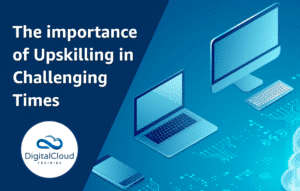Top 20 Interview Questions for AWS Developer

Getting ready for an AWS developer interview? Thorough preparation makes all the difference! In this article, we’ll go over common interview questions for AWS developers role you might encounter if you’re aiming for a developer job in a company that uses AWS.
The AWS Certified Developer – Associate is a well-regarded certification for people who work on AWS applications. If you’re new to AWS or want to show off your skills, this certification will be useful. The AWS Developer Associate certification showcases an individual’s expertise in developing and maintaining AWS-based applications.
As more companies migrate to the cloud, the demand for AWS Developer has grown. Hence, interviews for this role can be rigorous and challenging. To help candidates prepare, this article provides a set of questions often asked during interviews for an AWS Developer position.
These AWS Developer interview questions span foundational concepts, practical application scenarios, and best practices. By familiarizing yourself with these topics, you can approach your interview with confidence and clarity.
1.How do you deploy applications on AWS?
Answer: Applications can be deployed on AWS using various services like Elastic Beanstalk for easy deployment of applications without managing the infrastructure, EC2 with user data scripts for more control over the environment, or serverless deployments with AWS Lambda. You can also use container services like ECS or EKS, or adopt a CI/CD pipeline using AWS CodeDeploy, AWS CodeBuild, and AWS CodePipeline for automated and consistent deployment processes.
2.What’s the difference between using SQS and SNS in AWS?
Answer: SQS (Simple Queue Service) is a message queue service used to decouple servers in a system, gather data from several sources, and maintain the order of processing. SNS (Simple Notification Service) is a publish/subscribe messaging service that allows sending messages to multiple subscribers, which can be SQS queues, AWS Lambda functions, HTTP endpoints, emails, or SMS messages. In essence, SQS is used for decoupling and buffering messages between application components, whereas SNS is used for fan-out and instant notification purposes.
3.How do you secure data over AWS?
Answer: AWS provides several security measures for data protection:
- Data encryption in transit (using SSL/TLS) and at rest (using services like AWS KMS or AWS CloudHSM).
- Identity and Access Management (IAM) to control access to AWS services and resources.
- Virtual Private Cloud (VPC) to provide a private, isolated section of the AWS cloud where you can launch resources in a virtual network you define.
- AWS Shield and AWS WAF for protection against DDoS attacks, and securing applications running on AWS.
- Using private subnets and security groups to control inbound and outbound traffic to servers.
4.How do you troubleshoot and monitor applications on AWS?
Answer: AWS offers several tools for troubleshooting and monitoring:
- AWS CloudWatch to monitor resources and applications, collect logs, and set alarms.
- AWS X-Ray for analyzing and debugging production and distributed applications (like those built using a microservices architecture).
- AWS CloudTrail for logging API calls and changes to resources.
- Amazon CloudWatch Logs to monitor, store, and access log files from EC2 instances, AWS CloudTrail, and others.
5.What is a serverless application in AWS, and how do you deploy one?
Answer: A serverless application runs on servers, but users don’t need to manage them. Using AWS Lambda, code is executed without provisioning or managing servers, charging only for the compute time consumed. You deploy a serverless application by creating a Lambda function, setting the runtime environment, uploading your code, and setting the event triggers (like HTTP requests via Amazon API Gateway or a change in S3 buckets). You can also use AWS SAM (Serverless Application Model) or AWS Amplify for deploying serverless applications with additional resources or features.
6.What is AWS Lambda, and how do you optimize Lambda functions for better performance?
Answer: AWS Lambda is a serverless computing service that lets you run code without provisioning or managing servers. To optimize Lambda functions, you can:
- Reduce package size to speed up cold starts.
- Utilize environment variables to adjust behavior without changing code.
- Allocate appropriate memory; more memory provides more CPU and network throughput.
- Use X-Ray for performance insights.
- Avoid using recursive code.
- Batch and buffer requests if dealing with high-throughput data processing.
7.How do you manage application configurations and secrets in AWS?
Answer: Application configurations and secrets can be managed using AWS Parameter Store and AWS Secrets Manager. The Parameter Store, part of AWS Systems Manager, provides hierarchical storage for config data, strings, and secrets and can be easily accessed from other AWS services. AWS Secrets Manager helps in generating, storing, and retrieving secrets such as database credentials, API keys, and other sensitive information, enabling seamless rotation of secrets without the need for code changes.
8.What are the best practices for working with Amazon DynamoDB?
Answer: Best practices for DynamoDB include:
- Using appropriate data types for attributes.
- Employing partition keys effectively for distributed energy usage.
- Implementing Global Secondary Indexes (GSIs) for additional query flexibility.
- Managing read/write capacity modes to handle throughput efficiently.
- Using DynamoDB Accelerator (DAX) for caching and improved read performance.
- Batch operations to reduce costs.
- Regularly monitoring and logging operations using CloudWatch.
9.What is Blue/Green deployment, and how is it achieved in AWS?
Answer: Blue/Green deployment is a strategy that minimizes downtime and risk by running two identical production environments called Blue and Green. Only one environment serves live production traffic while the other is updated. Once testing is complete, traffic is switched or routed to the other environment. In AWS, this can be achieved using services like AWS Elastic Beanstalk, AWS CodeDeploy, Amazon Route 53, and Elastic Load Balancing, each offering ways to implement the routing and shifting of traffic between environments.
10.How do you ensure that your AWS services comply with regulatory requirements?
Answer: Compliance is ensured by using various AWS features and services:
- Using AWS Artifact for on-demand access to AWS’s compliance reports.
- Implementing governance and audit features like AWS CloudTrail, AWS Config, and AWS Security Hub for continuous monitoring and auditing.
- Managing data protection and encryption through AWS KMS, AWS Shield, AWS WAF, and Amazon Macie.
- Adhering to the shared responsibility model, where AWS is responsible for the security of the cloud, and customers are responsible for security in the cloud.
- Regularly consulting with the AWS Well-Architected Tool for measuring architecture against AWS best practices and making improvements.
- Working with third-party auditors to ensure compliance with industry-specific regulations.
11.How would you utilize AWS Step Functions?
Answer: AWS Step Functions lets you coordinate multiple AWS services into serverless workflows. These workflows can be used to create, manage, and visualize applications composed of Lambda functions, ECS tasks, and more. This allows developers to build complex processes and applications that involve multiple steps, error handling, parallel processing, and conditional logic without managing state or orchestrating components manually.
12.Describe the difference between AWS SAM and CloudFormation.
Answer: AWS Serverless Application Model (SAM) is an open-source framework designed specifically for building serverless applications on AWS. It extends AWS CloudFormation to provide a simplified way of defining the serverless resources. CloudFormation, on the other hand, is a more general tool for infrastructure as code and covers a wide array of AWS resources beyond just serverless.
13.How would you implement caching in AWS for your applications?
Answer: Amazon ElastiCache can be used to implement caching in AWS. It offers in-memory data store solutions like Redis and Memcached. Caching can be beneficial for reducing the load on databases and improving application response times by serving frequently accessed data from the cache.
14.What’s the significance of AWS CodeStar in the developer environment?
Answer: AWS CodeStar is a cloud-based development service that provides the tools needed for a developer to develop, build, and deploy applications on AWS. It integrates with other AWS services and offers a unified user interface, enabling faster development cycles and the setup of continuous integration and continuous delivery (CI/CD) capabilities.
15.How would you manage state in serverless applications?
Answer: Managing state in serverless applications can be challenging. One common approach is to use Amazon DynamoDB as a state store. DynamoDB offers low-latency performance and can scale according to the needs. Another approach is to utilize Amazon S3 for storing application states, especially for more substantial and less frequently accessed states.
16.What are AWS Lambda Layers, and why would you use them?
Answer: Lambda Layers are a distribution mechanism for libraries, custom runtimes, and function code. They help manage code, reduce redundancy, and improve deployment speeds. By separating the function code and its dependencies into different layers, multiple functions can share the same layer, leading to more straightforward code management and versioning.
17.Describe the primary purposes of Amazon API Gateway.
Answer: Amazon API Gateway is a service that lets developers create, deploy, and manage scalable APIs. Its primary purposes are to handle all tasks involved in processing API calls, such as traffic management, CORS support, authentication and authorization, and API version management. Additionally, it integrates with AWS Lambda and other AWS services to invoke logic or retrieve data.
18.How can developers ensure that their AWS Lambda functions are secure?
Answer: Developers can secure AWS Lambda functions by following best practices:
- Using IAM roles with least privilege access.
- Securing environment variables with encryption.
- Ensuring that the function code does not contain any sensitive information.
- Monitoring function activities using AWS CloudTrail and CloudWatch.
- Implementing VPC to isolate functions and control access.
19.What’s the difference between Amazon Aurora and Amazon RDS?
Answer: Amazon RDS is a managed relational database service that supports various database engines, including MySQL, PostgreSQL, MariaDB, Oracle, and SQL Server. Amazon Aurora, on the other hand, is a MySQL and PostgreSQL-compatible relational database built for the cloud. Aurora automatically divides your database volume into 10GB segments spread across many disks, offering up to 15 read replicas, automated backups, and enhanced performance and availability.
20.How would you handle secret and sensitive configuration data within AWS?
Answer: AWS Secrets Manager or AWS Systems Manager Parameter Store can be used to handle secret and sensitive configuration data. Secrets Manager enables you to rotate, manage, and retrieve database credentials, API keys, and other secrets throughout their lifecycle, while Parameter Store provides hierarchical storage for configuration data management and secrets. Both tools integrate seamlessly with other AWS services and ensure that sensitive information is encrypted and securely accessed.
Navigating the intricacies of AWS development requires a blend of theoretical knowledge and hands-on experience. We hope these AWS Developer Associate interview questions have provided you with a comprehensive insight into what to expect during your interview.
By understanding these concepts and scenarios, you’re better positioned to articulate your expertise and demonstrate your readiness for the role.
Remember, while preparation is vital, interviewers also appreciate genuine passion and continuous learning. Best of luck in your AWS journey!
Ready to Take Your Tech Career to the Next Level?
At Digital Cloud Training, we’re dedicated to your success. Our courses offer up-to-date content, equipping you with the expertise to stand out in the competitive tech job market.
Our On-Demand Training allows you to learn at your own pace, fitting seamlessly into your schedule. Dive into the world of cloud computing whenever and wherever suits you best.
Our Challenge Labs provide practical, real-world scenarios where you can apply your newfound knowledge without the risk of unexpected cloud costs. Gain hands-on experience and sharpen your skills.
For those seeking an immersive experience, our Cloud Mastery Bootcamp delivers live, job-ready training. Led by industry experts, this accelerated program can get you certified faster than you thought possible.
It’s time to propel your tech career forward. Join us at Digital Cloud Training and unlock your full potential in the world of cloud computing.





Responses